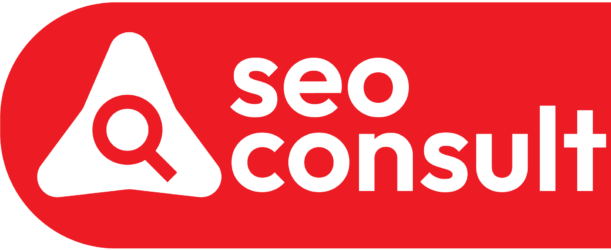In the world of online visibility, the structure of a website plays a pivotal role in determining its success. Enhancing the website structure through strategic SEO improvements can significantly impact its performance. By focusing on key aspects such as website navigation optimization, mobile-friendly design implementation, URL structure refinement, content hierarchy organization, and internal linking strategy integration, businesses can elevate their online presence and user experience. These five key SEO improvements hold the potential to not only boost search engine rankings but also enhance overall website functionality.
Website Navigation Optimization
To enhance user experience and improve search engine rankings, optimizing website navigation is crucial for ensuring seamless access to content and easy navigation paths for visitors. User experience plays a significant role in determining the success of a website, with menu design being a key element in enhancing this experience. A well-thought-out menu design should be intuitive, responsive, and organized, allowing users to quickly find the information they seek.
When focusing on website navigation optimization, it is essential to consider the user's journey through the site. A clear and well-structured menu can guide visitors to relevant pages efficiently, increasing engagement and reducing bounce rates. By incorporating user-friendly language and logical categorization, the menu design can significantly impact how users interact with the website.
Furthermore, a strategic menu design can also positively influence search engine rankings. Search engines prioritize websites that offer a seamless user experience, including easy navigation. Therefore, optimizing menu design not only benefits visitors but also contributes to improved visibility and ranking on search engine results pages.
Mobile-Friendly Design Implementation
Implementing a mobile-friendly design is imperative for modern websites seeking to cater to the increasing number of users accessing content through mobile devices. A responsive layout is crucial for ensuring that websites adapt seamlessly to different screen sizes and resolutions, providing users with a consistent and optimized experience across devices. A mobile-friendly design not only enhances user experience but also plays a significant role in improving search engine rankings, as search engines like Google prioritize mobile-friendly websites in their results.
When designing a mobile-friendly website, it is essential to prioritize user experience by ensuring easy navigation, fast loading times, and clear, legible content. Mobile users often have different needs and behaviors compared to desktop users, so tailoring the design to meet these specific requirements is key to success. By focusing on creating a responsive layout that delivers a seamless user experience, websites can attract and retain mobile visitors, ultimately driving more traffic and engagement.
URL Structure Refinement
Enhancing the URL structure of a website is a strategic endeavor that requires meticulous attention to detail and a data-driven approach to optimize search engine visibility and user experience. Keyword optimization plays a crucial role in URL structure refinement. By incorporating relevant keywords into the URL, you can signal to search engines the content of the page, improving its chances of ranking higher in search results. Additionally, utilizing URL readability best practices is essential for enhancing user experience. Clear, descriptive URLs not only help visitors understand the content of the page before clicking on it but also contribute to better navigation throughout the website.
When refining URL structures, it is important to keep them concise and relevant to the page's content. Avoiding long strings of numbers or irrelevant characters can positively impact both SEO performance and user engagement. Furthermore, organizing URLs in a logical manner that reflects the content hierarchy of the website can aid in better categorization by search engines and improve overall site structure.
Content Hierarchy Organization
In structuring a website's content hierarchy, meticulous attention to detail and a strategic approach are essential to optimize user experience and search engine visibility. Keyword mapping plays a crucial role in organizing content effectively. By aligning specific keywords with corresponding sections of the website, it becomes easier for users and search engines to navigate and understand the site's offerings. This strategic placement of keywords within the content hierarchy can significantly enhance the site's SEO performance.
Heading optimization is another vital aspect of content hierarchy organization. Utilizing clear and descriptive headings not only improves user experience by making the content easier to read and understand but also signals to search engines the main topics covered on the page. By incorporating relevant keywords into headings, websites can further strengthen their SEO efforts and increase their visibility in search results.
Internal Linking Strategy Integration
When optimizing a website for improved search engine visibility, the seamless integration of an internal linking strategy is paramount for enhancing user navigation and reinforcing the site's overall SEO performance. Internal linking involves connecting one page of a website to another through hyperlinks, providing clear pathways for users and search engine crawlers to navigate the site effectively. A well-thought-out internal linking strategy not only impacts user experience but also boosts SEO by distributing page authority throughout the website.
Anchor text plays a crucial role in internal linking by providing context to the linked page. Using descriptive and relevant anchor text helps search engines understand the content of the linked page, contributing to improved visibility in search results. Additionally, strategic placement of internal links within the content can influence the flow of page authority, directing it towards essential pages that require a visibility boost.
Frequently Asked Questions
How Can I Ensure My Website Is Accessible for Users With Disabilities?
Ensuring your website's accessibility for users with disabilities is crucial for overall user experience and accessibility compliance. Incorporating inclusive design principles and disability accommodations can significantly enhance the usability of your site for all visitors. Implementing features such as alt text for images, keyboard navigation options, and clear, organized content can make a substantial difference in providing an inclusive digital environment for individuals with disabilities.
Are There Any Specific Tools or Plugins That Can Help With Improving Website Speed and Performance?
When it comes to optimizing website speed and performance, utilizing tools like website caching plugins can significantly enhance loading times. Performance optimization strategies such as reducing server response times and leveraging content delivery networks can further boost the overall user experience. Ensuring mobile responsiveness and optimizing page speed are crucial components of a successful website. By implementing these measures effectively, you can enhance user engagement and drive better SEO outcomes.
What Are Some Best Practices for Optimizing Images and Multimedia Content for Seo?
When optimizing images and multimedia content for SEO, key practices include crafting descriptive alt text that accurately reflects the content, thus improving accessibility and keyword relevance. Additionally, employing image compression techniques to reduce file sizes without compromising quality can enhance website loading speed, contributing to a better user experience and potentially boosting search engine rankings. These strategies align with SEO best practices that prioritize both user engagement and technical optimization.
How Can I Effectively Monitor and Track the Performance of My Website After Implementing These SEO Improvements?
To effectively monitor and track the performance of your website after implementing SEO improvements, leverage website analytics tools to gather data on traffic, user behavior, and engagement metrics. Analyzing this data will provide insights into the effectiveness of your SEO strategies. Focus on key performance indicators such as bounce rate, session duration, and conversion rates to measure user engagement and overall website performance. Regularly monitor and adjust your strategies based on these analytics to optimize results.
What Are Some Common Mistakes to Avoid When Implementing SEO Improvements on a Website?
When implementing SEO improvements on a website, avoiding common mistakes is crucial for success. Neglecting a solid content strategy can lead to subpar results, as can overlooking user experience. Failing to optimize for mobile devices and local search can also hinder visibility and engagement. By prioritizing these elements and steering clear of these errors, websites can enhance their SEO performance and overall online presence effectively.
Conclusion
In conclusion, implementing key SEO improvements such as optimizing website navigation, incorporating mobile-friendly design, refining URL structure, organizing content hierarchy, and integrating an internal linking strategy are essential for enhancing website structure. These improvements can greatly impact search engine rankings, user experience, and overall website performance, ultimately leading to increased visibility and traffic. By focusing on these strategic enhancements, websites can effectively attract and engage audiences while improving their online presence.










